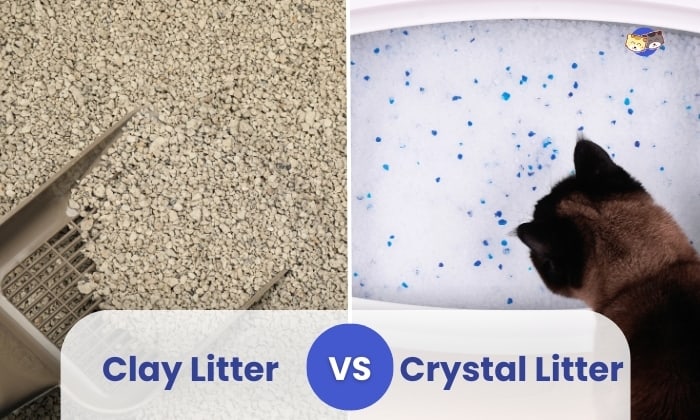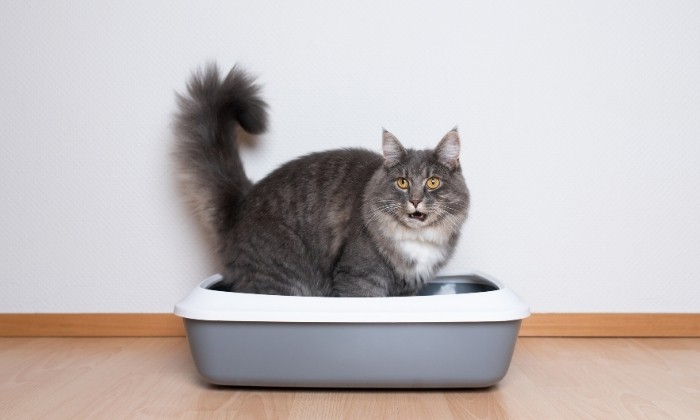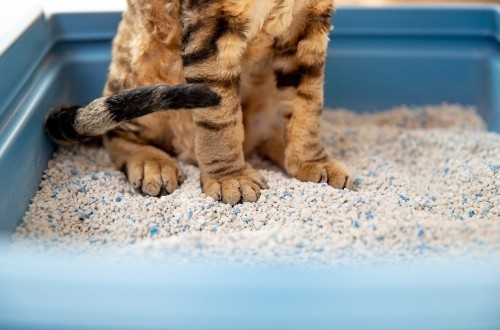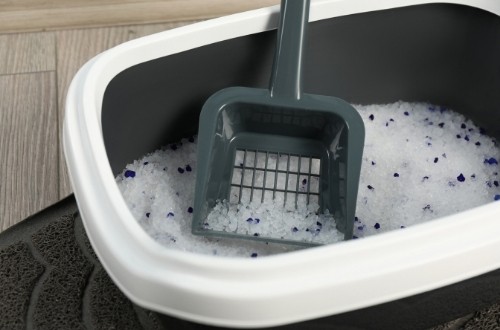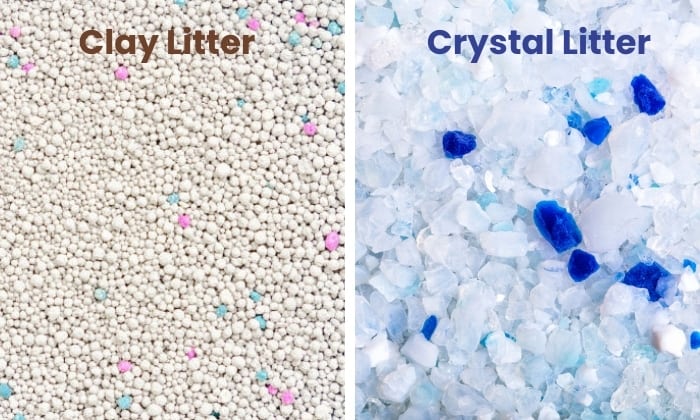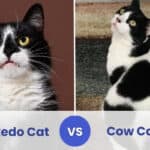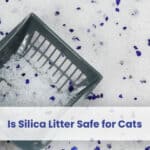As cat owners, it would be a hassle to go without cat litter at home. Having a litter box ready will train our felines where they can pee or defecate without creating a big mess. Still, the variety of choices is surely a headache for many. We know this!
Today, we will be talking about clay vs. crystal litter, as many cat parents ask us to compare these two. Let’s follow our testing and determine the pros and cons of these two picks.
| Clay Litter | Crystal or Silica Litter | |
| Pros |
|
|
| Cons |
|
|
Table of Contents
Understanding Cat Litter
A good litter for cats is supposed to mask the bad odor, and it shouldn’t stick to the cat’s fur and feet. These are the main qualities that we look for when picking cat litters.
Oh, and there’s more: cat litter can be non-clumping or clumping. The latter absorbs and clumps both solid and liquid wastes, so you just have to scoop out the used portion (and not empty the litter box entirely!).
There are also different types of cat litter for both kittens and adult cats. Alternatives to clay-type, like the silica cat litter, are also available on the market.
Crystal Cat Litter vs Clay Litter
In this section, we created a comparison between clay and crystal or silica cat litter (yes, they’re the same!). We also imposed strict FVEAP standards to ensure our felines are safe and healthy.
1. Clay Cat Litter
Clay is the oldest and most common material for cat litter. It can be the clumping type where the litter clusters together once exposed to the waste, or non-clumping, which absorbs the waste’s moisture.
The clay used in this kind of cat litter is usually bentonite which comes from aged volcanic ashes and is known for its excellent absorption ability.
- Odor Control – Clay-based litters perform well in terms of masking the waste’s odor, especially clumping type ones.
- Dust Levels and Tracking – Clay litter can be dusty which is bad for allergic felines. We recommend using one that says “low-dust.”
Compared to other materials, clay litter may also track more. Ensure that the particle weight of the clay is bigger and heavier for less tracking.
- Safety – Using clay litter for your cat is safe, but double-check the product quality since low-quality ones may contain crystalline silica; this can cause cancer in humans and respiratory illness in cats.
- Sustainability – The process of mining bentonite clay can have environmental implications, such as producing toxic gases. Its removal from the ground can also cause soil erosion.
- Cost – Non-clumping clay litters are less expensive than clumping ones. In general, clay litter is less expensive than crystal litter or natural litters like corn-based.
Prices differ depending on the brands you pick, still you can find clay litters that cost $20 or less, such as Dr. Elsey’s Cat Litter line.
2. Crystal Cat Litter
Crystal litter is made from quartz and has a non-toxic silica (amorphous silica gel) to maintain dryness. Silica litter is extra effective in trapping the liquid in its microscopic pores and eliminating the odor that comes with the waste.
- Odor Control – Crystal cat litter is more efficient in neutralizing waste odor compared to clay-based litter due to its advanced absorption properties.
- Dust Levels and Tracking – While crystal litter may contain less dust than clay (unless the clay is low-dust), it can get dusty throughout usage.
It’s also non-clumping and tracks easily, so we advise checking the size and shape of the particles; the bigger, the better.
- Safety – As mentioned, crystal cat litter is composed of amorphous silica which is non-toxic to both cats and humans. So, it’s definitely safe!
- Sustainability – Since crystal litter is made from quartz, it’s non-renewable. Considering that the quarry has legal permits, making the litter can still be harmful to the environment because of the necessary carbon dioxide pressure.
- Cost – Crystal cat litter is in the more expensive tier because of its material and the intensive process of creating it. Known brands such as Fresh Step cost more than $20, depending on the amount.
Is Crystal Litter Better Than Clay?
For some cats, yes, since crystal litter is non-toxic. If you are allergic to clay dust, this one is also the better choice, too.
However, some cats love clumping clay, so we suggest picking ones that work for your cat and your health, too!
Is There a Cat Litter Without Silica?
Yes. Natural cat litter like those made of corn, wheat, walnut shells, and pine, don’t contain silica dust.
Conclusion
There are many cat litter choices for our furry friends, but these two are very popular: clay vs crystal litter. Which do you think is better?
Both clay and crystal litter are excellent in odor elimination and make waste easy to clean. However, it’s essential to check the quality of the brand, especially for clay, which may contain crystalline silica that is harmful for cats and humans.
Overall, it depends on you and your cat’s preferences regarding comfort, cleanliness (clumping vs non-clumping), and budget.

I pursued veterinary studies at the University of Kansas. After several years of practice, I established a veterinary clinic in Kansas. When Michael extended an invitation with a vision that went beyond emergency support – sharing of caregiving information for guardians to create the best living environment for cats, I didn’t hesitate to join the organization.
My role here involves verifying the information presented on the official website. With my experience, I believe the information provided is entirely accurate. If you have any concerns, please feel free to reach out to me


